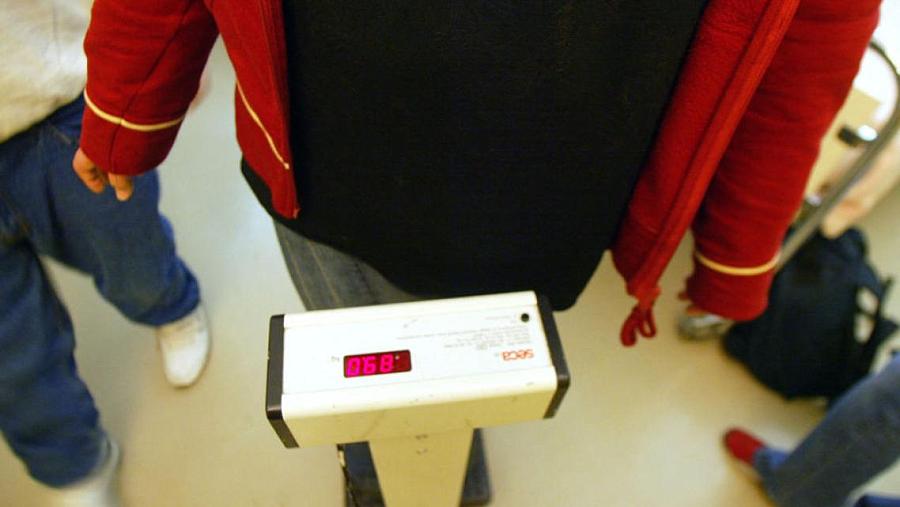The pandemic made childhood obesity even worse. How can we help the children most at risk?

Photo by Francois Guillot/AFP via Getty Images
One in five children in the United States is obese. Compared to children born in the early 1990s, children born since the 2000s were more obese and were obese at a younger age. The problem disproportionately affects Black, Latino, and Native American children. Native American children are rarely mentioned in research, but available data shows the rate of obesity among Native American children was up to 30%.
Obese children are vulnerable to serious health problems that can begin in their tween years. These problems include high blood pressure, sleep apnea, asthma, and bone and joint disease. Type 2 diabetes, formerly known as “adult onset diabetes,” can now start in childhood. Non-alcoholic fatty liver disease is now the most common cause of liver disease in children. Sometimes, fatty liver is severe enough to cause liver fibrosis, or even cirrhosis. Psychosocial implications of obesity include bullying, social isolation, depression, and low self-esteem. Weight stigma, even from health care professionals, may further worsen health outcomes.
The problem is now more urgent because CDC data shows obesity rates among children increased rapidly during the coronavirus pandemic. In California, the rate of obesity among children 5 to 11 years old increased from 19% before the pandemic to 26% during the pandemic. Similar trends were seen in a national sample of almost half a million children.
The spillover of this unaddressed epidemic will be seen in coming years. Many obese adolescents will remain obese as adults. Even if an obese adolescent does not become an obese adult, cardiovascular risks remain. As obese youth reach adulthood, evidence shows that parents can pass an increased risk of obesity to their children, thus creating intergenerational risks.
In January, the American Academy of Pediatrics released a comprehensive clinical practice guideline for the evaluation and treatment of obesity. The guidelines recommended screening all children over 2 for obesity. However, minority children are less likely to have a primary care clinician who could provide that screening. Further, screening from a primary care clinician is just the first step to life-changing help. The guidelines also recommend “26 or more hours of face-to-face, family-based, multicomponent treatment over a 3- to 12-month period.” The report says 52 hours is even better. While a few primary care clinicians can provide some obesity management services, few could come near this lofty goal.
The AAP guidelines generated controversy and backlash, both among parents as well as medical professionals. The resistance was strongest on recommendations for medication and surgical treatment for childhood obesity. Advocates also raised concerns the guidelines promoted weight bias, stigma and eating disorders. These considerations are important, but many children with obesity struggle to get any care at all, even when their health is at risk.
For children with severe obesity, a multidisciplinary weight management clinic can provide access to nutritionists, social workers, child psychologists, and other subspecialists. But access to multidisciplinary weight management clinics, which are usually in large pediatric medical centers, remains uneven. Minority children who do have a primary care clinician are less likely than white children to receive specialty care. Even with a referral, Black and Latino children may have difficulty attending intervention clinics due to limited access to transportation, financial and food insecurity, and public health insurance. Having access to private insurance was one of the strongest predictors of clinic attendance following a referral to a weight management program.
In California, comprehensive multidisciplinary clinics are run out of large academic centers, including at USC, UCSD, UCLA, UCSF and Stanford. It's unfortunate that at least historically, the only way to access the kind of comprehensive care the AAP envisions is through a few coastal, mostly urban and suburban centers that already have huge waiting lists. It's important to look at smaller places that provide the brunt of pediatric health care, for instance community clinics, county hospitals, and other federally qualified health care clinics.
This reporting project for the 2023 California Health Equity Fellowship will be a series investigating how severe obesity directly contributes to specific health problems in children. I’ll look at disparities in obesity rates among Latino, Black and Native American children, as well as children living in rural areas since the pandemic. I’ll also explore how interventions are helping or failing these vulnerable children. My plan is to interview children and their families as well as experts who are trying to prevent and manage obesity using racially and culturally relevant methods.
